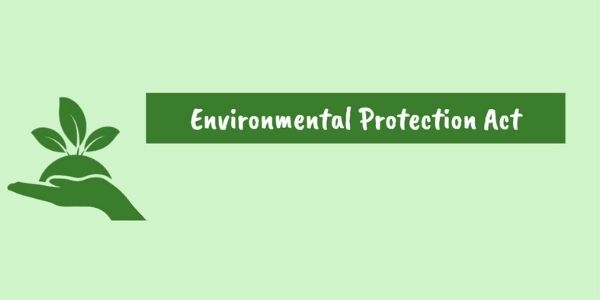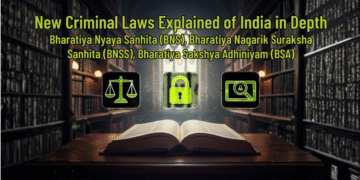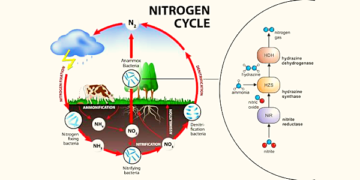This article lets us know about the Environment Protection Act, laws in India. Further, learn about the water prevention and control of pollution act, air prevention and control of pollution act. Understanding the laws is essential for the IAS exam. Therefore, we have added all vital points to help with your IAS exam preparations. We all know about the IAS exam syllabus, and it has the longest syllabus. Further, one needs to cover the complete syllabus to get the best results in the exam. You can refer to the previous year’s topics to know which are the latest and trending topics for the IAS exam. So, let’s begin and learn more about the environmental protection laws in India.

About the Article
In the first place, the Environment Protection Act, 1986 Act of the Parliament of India. Further, the main aim is to provide the protection and improvement of the environment and for matters connected in addition to that. Additionally, it has six sections and four chapters. First, the Act aims to implement the United Nations Conference on Human Environment decisions. Later, they relate to protecting and improving the human environment and the prevention of hazards to human beings. Below we have added all details related to the water prevention and control of pollution act and environmental laws in India.
Environment Protection Act
Further, it empowers the Central Government to establish authorities charged with the mandate of preventing environmental pollution in all its forms and tackling specific environmental problems peculiar to different parts of the country. Besides, there were no provisions in the Constitution to protect the natural environment. However, later, the Fundamental Duties, which were added by the 42nd Amendment to the Constitution, prescribed the safeguarding of the environment.
Later, this Amendment also added new Directive Principles of State Policy, one of which was Article 48A. Further, these developments resulted from the United Nations Conference on Human Environment, held in Stockholm in 1972. Then in 1986, the EPA was passed by the Parliament in the wake of the Bhopal Gas Tragedy, which occurred on Dec 2, 1984.
Some of the essential environmental protection laws in India are mentioned below.
- The National Green Tribunal Act, 2010
- The Air Prevention and Control of Pollution Act – 1981
- The Water Prevention and Control of Pollution Act – 1974
- The Environment Protection Act, 1986
History
Further, discussing the history, this act was enacted by the Parliament of India in 1986. As the introduction says, an Act to provide for the protection and improvement of the environment. Decisions were decided at the United Nations Conference on the Human Environment held in Stockholm in June 1972. India participated in taking appropriate steps to protect and improve the human environment.

Objectives of Environmental laws in India
- In the first place, it aims at implement decisions made at the United Nations Conference on Human Environment held in Stockholm.
- Further, making of a government authority to regulate industry that can issue direct orders including closure orders.
- Also, imposing punishments and penalties on those who endanger the environment, safety and health.
- Engaging in the sustainable development of the environment.
Salient Features of the EPA Act
Further, powers of the Central Government shall have the ability to take all measures as it deems necessary to secure and improve the quality of the environment in coordination with the State Governments. Further, plan and execute a nationwide program to prevent, control, and decrease the environmental pollution. Besides, lay down standards for the quality of the environment in its various aspects. Later, standards for emission or discharge of environmental pollutants from multiple sources.
Further, no court shall take cognizance of any offense under this Act except on a complaint made by the Central Government or any authority on behalf of the former. Besides, a person who has approached the Courts after a 60-day notice. Also, no individual shall handle or shall be caused to operate any hazardous substance.
Provisions of Environmental Protection Laws
Further, it empowers the Central Government to establish authorities charged with the mandate of preventing environmental pollution in all its forms and tackling specific ecological problems peculiar to different parts of the country. Besides, there were no provisions in the Constitution to protect the natural environment. However, later, the Fundamental Duties, which were added by the 42nd Amendment to the Constitution, prescribed the safeguarding of the environment, including forests, lakes, rivers, and wildlife, as a duty of the country’s citizens.
Later, this Amendment also added new Directive Principles of State Policy, one of which was Article 48A. Further, these developments resulted from the United Nations Conference on Human Environment, held in Stockholm in 1972. Then in 1986, the EPA was passed by the Parliament in the wake of the Bhopal Gas Tragedy, which occurred on Dec 2, 1984.
Drawbacks of the Environment Protection Act
- In the first place, the act also says nothing about public participation as regards environmental protection.
- There is a need to involve the citizens in environmental protection to check arbitrariness and raise awareness and empathy towards the environment.
- Further, incomplete coverage of pollutants, like the act does not address modern concept of pollution such as noise, transport system and radiation.
The Air (Prevention and Control of Pollution) Act of 1981
A law was passed by the Parliament of India to control the harmful effects of air pollution in India. Further, this act is seen as the first concrete step taken by the government of India to combat air pollution. Further, the impact of climate change caused by all forms of pollution became all too apparent in the early 1970s. Also, India itself had problems regarding air pollution because of the wide variety of factors like stubble burning, improper practices, environmental factors, etc.
Further, the main features include,
- Assisting Central Government Air Pollution related issues
- Research about the causes and impact of the Air Pollution
- Creating awareness to reduce air pollution
- To create a central and State Boards and empower them to monitor air quality and control pollution
UPSC Exam Highlights
Now we will give you quick highlights about the IAS exam below.
- In the first place, as we all know, the IAS exam is conducted by the UPSC every year. Further, we have seen lakhs of candidates applying for the exam.
- Further, in the IAS exam, there are three main rounds. It has Prelims, the main exam, and an interview round. One needs to go through all stages of the IAS exam.
- In the prelims, there are two papers that are objective type. Further, in the main exam, there are nine papers that are descriptive types.
- Later, to prepare for the IAS exam, one can go for self-study and can go for coaching classes. Then, for this exam, one must work hard and put in all efforts to clear the exam.
- Further, one must refer to the last year’s question papers to know about the IAS exam pattern, syllabus, and other details. It is essential for one to give mock tests and tests to get a clear understanding of the exam syllabus.
- One must make the best use of the time and give time to all subjects. Revision is an essential part of any exam, so try to revise regularly.
- To assist you with your IAS exam preparation, we have covered all details of the exam, and you can click here and learn about the IAS exam-related information. Know More.
- Lastly, one needs to go through the official website to get the latest information related to the IAS exam. Click Here.

Conclusion – Environment Protection Act
This article provides all information related to the environmental protection laws in India. It is one of the essential concepts for the IAS exam. Therefore, go through the complete article about the Environment Protection Act. Further, one can also go through the previous year’s question papers to know the question pattern, syllabus, marks, and other details. Additionally, get complete information related to the other IAS exam study materials here. We have tried covering all details to help you with the IAS exam. Therefore, try to write down all essential points while reading the article. It will help you during the exam. We wish you good wishes for the IAS exam. Prepare well and work hard. Good Luck.
FAQs – Environment Protection Act
It provides safety standards for the presence of various pollutants in the environment.
The umbrella act called the Environment (Protection) Act got passed in 1986, encompassing water, air, land, and other inter-relationships
An Act that helps to prevent, control, and reduction of air pollution
Understand the exam syllabus and the pattern of the paper. Further, know which are the best books, try to solve question papers to know more about the exam.

Editor’s Note | Environment Protection Act
After reading the complete article, you will get information related to the environmental protection laws in India and the water and air prevention and control of the pollution act. Further, it is some of the essential topics for the IAS exam, and we have covered all details that will help you with the IAS exam. Later, we have also provided necessary links that will help you in providing all knowledge for the exam. We have also added details related to the exam and how to prepare for the exam. As we always say to clear the IAS exam, one must be a hard worker and show dedication. Many apply for the exam, but only a few will clear the exam. Therefore, know the exam syllabus and prepare well for the exam. All the best.






